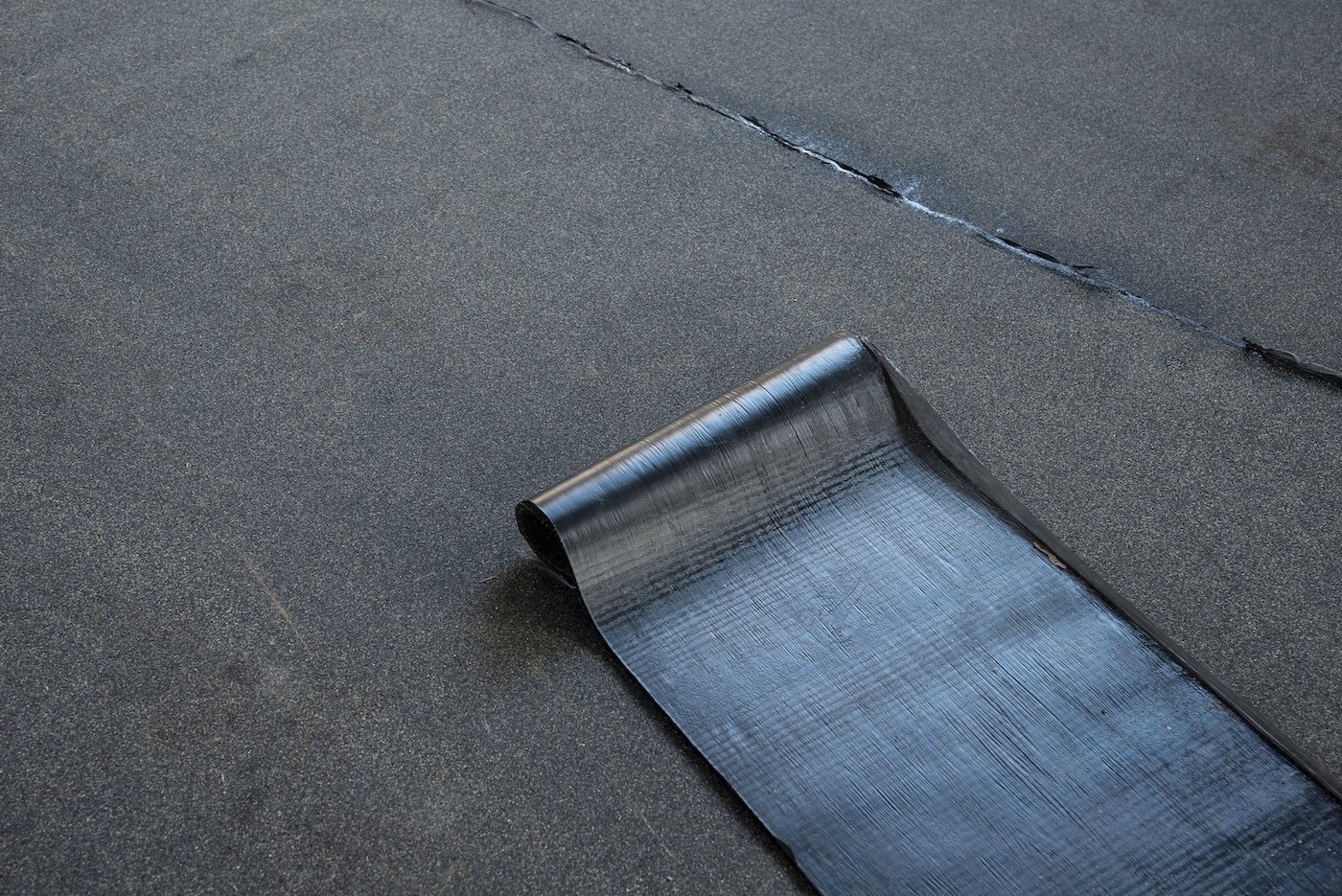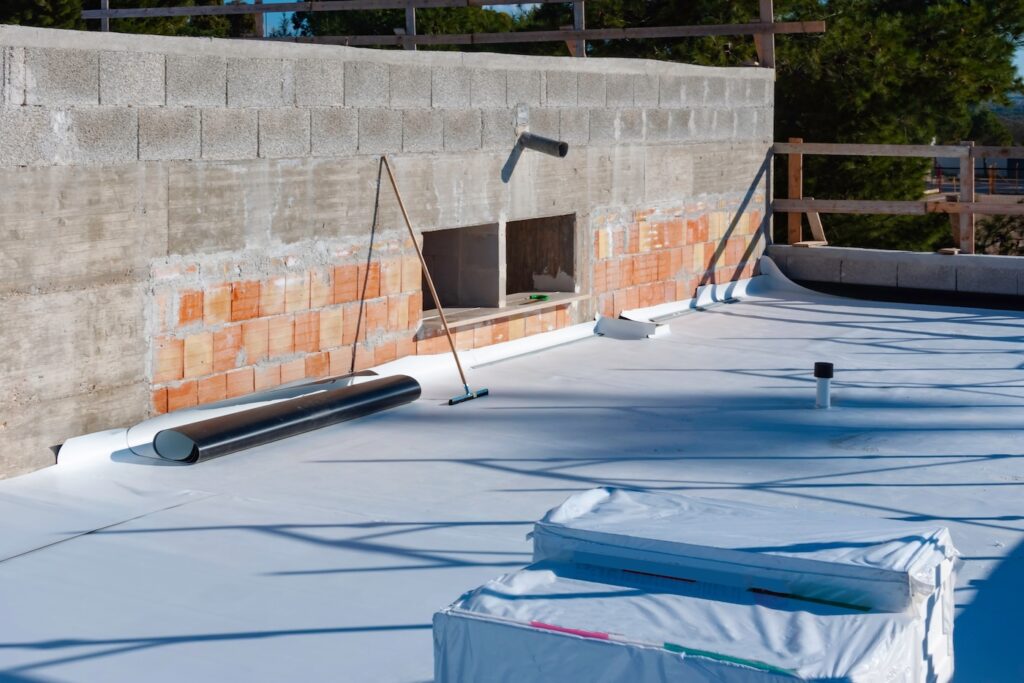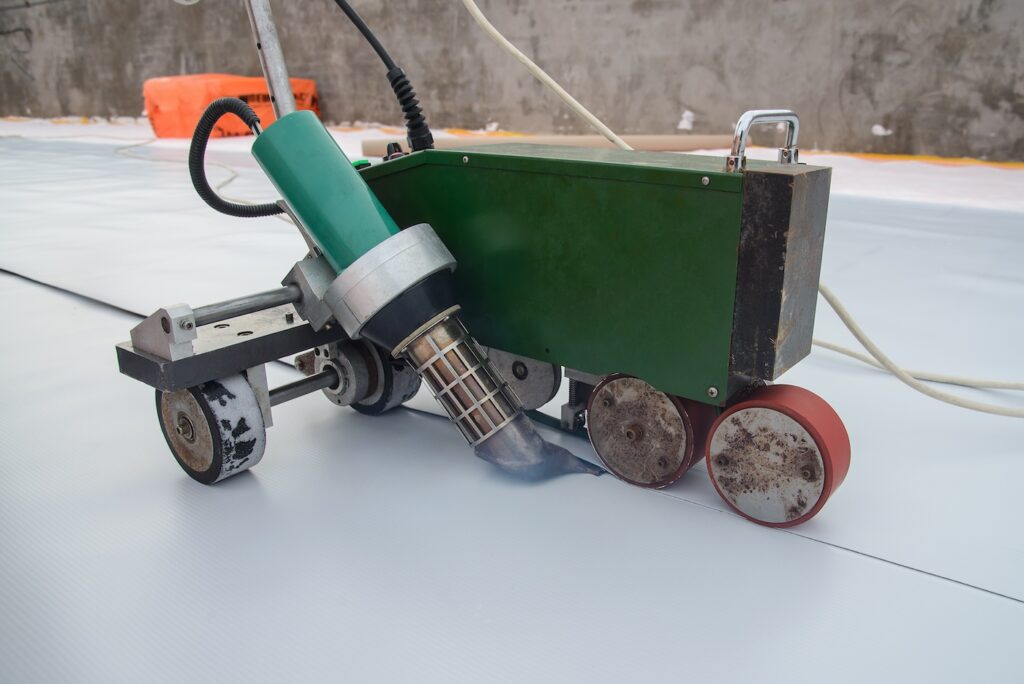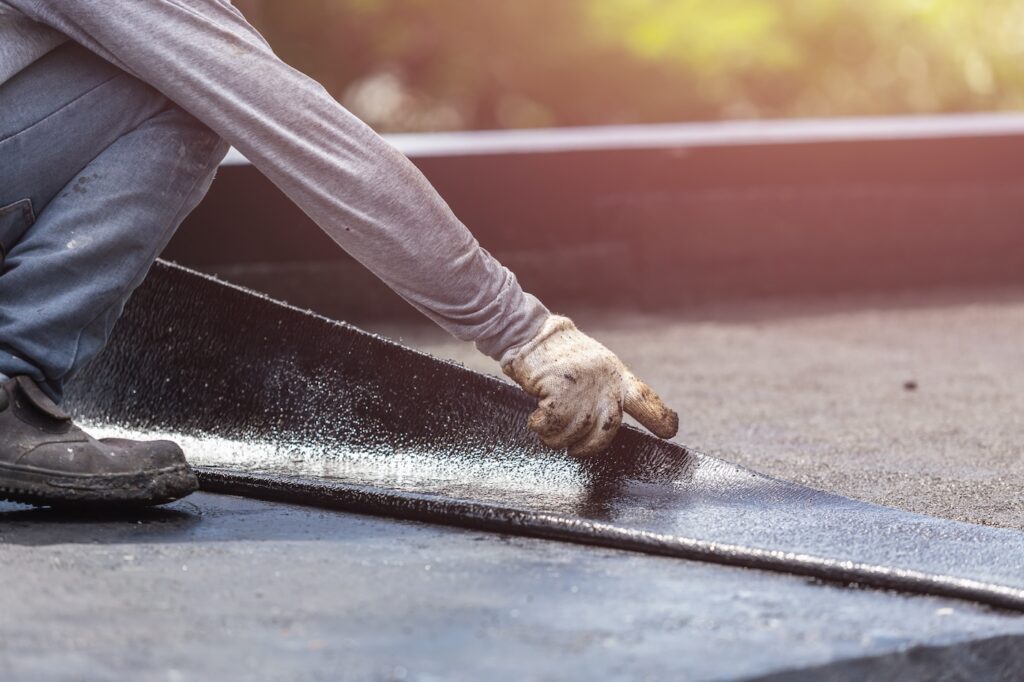
Roof Membrane (Types, Benefits & Installation Tips)
9/26/25
6 Min Read
When protecting flat and low-slope roofs, the roof membrane is one of the most critical components of the entire system. A roof membrane is a waterproof layer that acts as the first line of defense against rain, snow, and environmental exposure. Whether installed on commercial facilities, warehouses, or residential homes, the right membrane can extend the life of a roof while lowering maintenance costs.
Here’s what you’ll learn in this guide:
- Types of roof membranes: The most common systems available today.
- Benefits: How membranes protect your property and save money.
- Installation tips: Key considerations for long-term performance.
What Is a Roof Membrane?
A roof membrane is a continuous layer of material installed over insulation or roof sheathing to provide waterproofing and weather resistance. Membranes are most commonly used on flat or low-slope roofs, where shingles and traditional roofing aren’t practical. Their job is to prevent water from entering the building while also helping improve energy efficiency.
In Brunswick, OH, and nearby cities, roof membranes are especially important due to seasonal weather shifts. Hot summers can cause expansion and contraction, while icy winters test the durability of seams. Choosing the right membrane helps property owners avoid costly leaks and repairs. Businesses in Brunswick’s industrial parks, for example, often face issues with ponding water that make roof membrane selection critical to long-term protection.
4 Types of Roof Membranes

There are several types of roof membranes available, such as TPO, EPDM, PVC, and Modified Bitumen. Each one of them offers distinct advantages depending on factors such as climate, building use, energy efficiency goals, and overall budget, making it important to select the option that best aligns with both performance needs and long-term value.
1. TPO Membrane
- Energy efficiency: White reflective surface reduces cooling costs.
- Durability: Resistant to UV rays, punctures, and chemical exposure.
- Cost-effective: A balance of affordability and performance.
2. EPDM Membrane
- Proven track record: In use since the 1960s.
- Flexibility: Performs well in freeze-thaw cycles.
- Longevity: Often lasts 25–30 years with proper maintenance.
3. PVC Membrane
- Chemical resistance: Ideal for restaurants or industrial buildings.
- Seam strength: Heat-welded seams create watertight protection.
- Energy savings: Reflective surface lowers cooling bills.
4. Modified Bitumen
- Strength: Multiple layers offer extra durability.
- Application options: Can be installed with heat, cold adhesives, or self-adhesive sheets.
- Time-tested: Common on commercial properties for decades.
Benefits of Roof Membranes
Installing a roof membrane offers long-lasting benefits for property owners, from better protection against leaks to improved energy efficiency and reduced maintenance needs.
Waterproof Protection
Roof membranes are designed to keep water out, even during heavy storms. In Ohio, frequent thunderstorms and snow melt make this protection essential for avoiding structural damage. Without a reliable membrane, even minor leaks can lead to mold growth, wood rot, or damage to insulation that reduces energy efficiency.
Energy Efficiency
Reflective membranes like TPO and PVC help reduce heat absorption, lowering cooling costs during the summer. This can provide significant savings for large commercial buildings. For homeowners, improved insulation and reduced temperature fluctuations inside the home mean greater comfort during Brunswick’s hot summers and cold winters.
Low Maintenance
Membranes require less upkeep than traditional roofing. Routine inspections, clearing debris, and sealing minor punctures can extend their service life by years. For property managers overseeing warehouses or retail spaces in Brunswick, this reduced maintenance burden can save thousands of dollars annually.
Longevity
With proper installation, roof membranes can last 20–30 years or more, making them a reliable long-term investment. Considering the costs of repeated repairs on older systems, installing a durable membrane can be more cost-effective over time.
5 Installation Tips for Roof Membranes

Proper installation is key to maximizing the life and performance of a roof membrane, as even small mistakes can lead to costly repairs or premature failure. Here are some best practices:
1. Work With Experienced Contractors
Roof membranes require specialized installation techniques, such as heat welding or precise adhesive application. Always hire a trustworthy contractor with proven expertise. At Buckeye State Roofing, our team has years of experience installing membranes for both commercial and residential properties across Medina and Brunswick.
2. Ensure Proper Drainage
Flat roofs must have a functional drainage system. Without it, ponding water can damage membranes and shorten their lifespan. In Brunswick, where heavy spring storms are common, drainage issues can quickly escalate into structural problems if ignored.
3. Schedule Regular Inspections
Even the most durable membranes should be inspected twice a year. Catching small issues early helps prevent costly repairs. For example, seams that lift slightly during Ohio’s freeze-thaw cycle can be resealed easily if detected early, but left unchecked, they can compromise the entire system.
4. Choose the Right Material for the Climate
In Ohio, freeze-thaw cycles, humidity, and heavy rainfall make certain membranes more effective than others. Contractors can help select the right system for local conditions. EPDM, for example, excels in colder climates, while TPO and PVC are ideal for areas where cooling costs are a concern.
5. Pay Attention to Weather Conditions
Roof membrane installation should always be done during favorable weather. Cold temperatures can make adhesives less effective, while high winds or rain can interfere with proper sealing. In Ohio, scheduling installation during mild spring or fall conditions helps ensure the materials bond correctly and deliver long-term performance.
Common Problems Without a Reliable Roof Membrane
Skipping or neglecting a roof membrane can lead to serious issues over time. Without a proper waterproof barrier, water can seep into the roof deck, causing rot and structural weakening. Businesses often discover this only after noticing leaks inside the building, at which point repairs are far more costly.
Another issue is energy loss. Roofs without reflective membranes may absorb large amounts of heat during summer, driving up air conditioning costs. In Brunswick, where humidity can amplify discomfort, this added expense can be a burden for both businesses and homeowners.
Roof Membranes for Ohio Properties

For property owners in Brunswick, roof membranes offer a durable, cost-effective way to protect investments. From warehouses dealing with ponding water to homes facing seasonal storms, the right membrane ensures peace of mind year-round. Ohio’s weather can be unpredictable, but a well-installed roof membrane keeps buildings secure against high winds, heavy rainfall, and snow buildup. We’re proud to serve Brunswick, OH, and nearby cities with professional roof membrane installation, repairs, and flat roof replacements.
Why Choose Buckeye State Roofing?
At Buckeye State Roofing, we combine integrity, innovation, and reliability to deliver lasting results. As a GAF Master Elite contractor, we use industry-leading materials and provide warranties that protect your investment.
We understand the unique challenges that come with maintaining property in Ohio’s climate. Whether you’re a business owner managing a warehouse or a homeowner protecting your family’s investment, we have the experience and expertise to deliver long-lasting solutions.
When you’re ready to explore the best roof membrane options for your property, our team is here to help. Contact Buckeye State Roofing today to schedule your free estimate and discover how a roof membrane can safeguard your building for decades to come.
